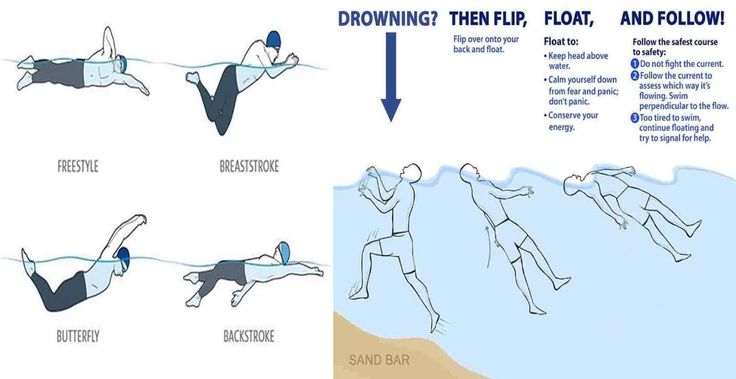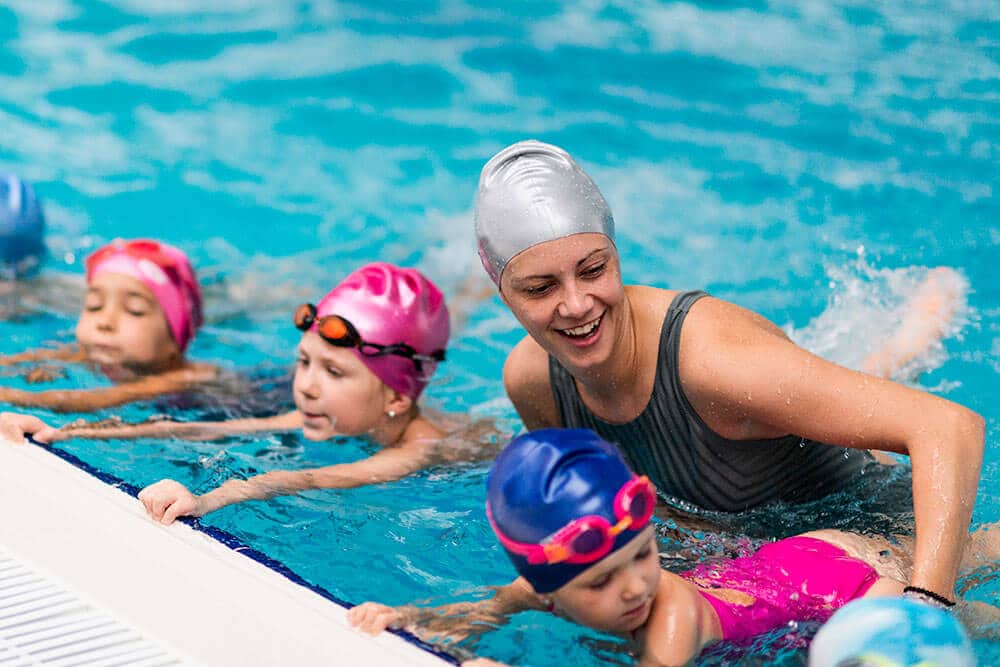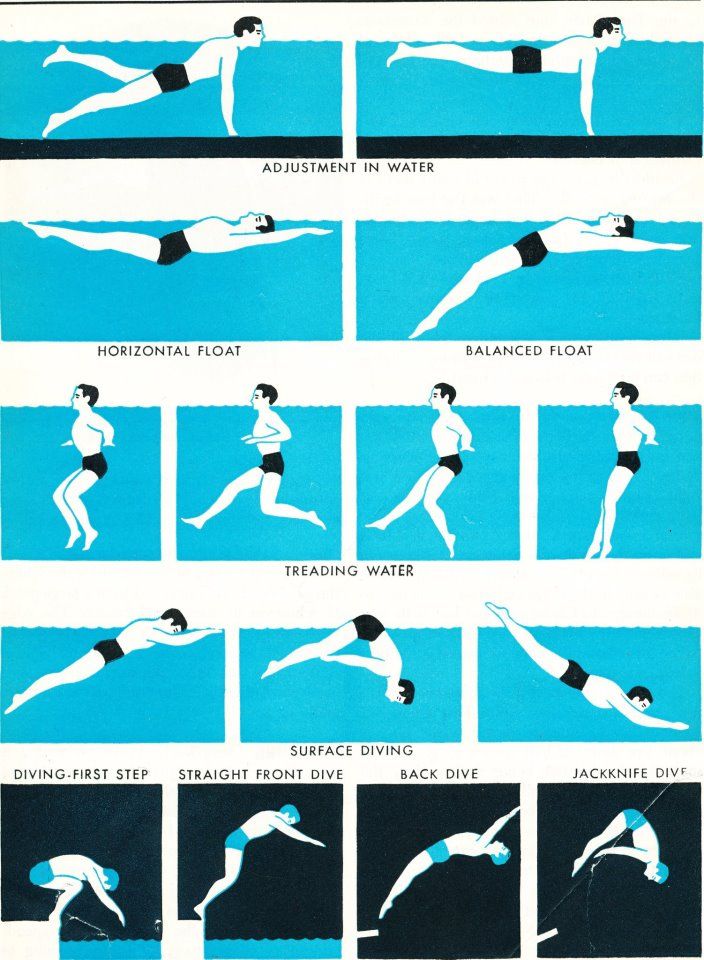Hey there! Welcome to our ultimate guide on learning how to swim! Swimming is not just a fun activity; it’s a vital life skill that offers numerous benefits. Whether you're looking to dive into competition or just want to enjoy fun times at the beach, getting comfortable in the water is your first step. So, let’s take a deep breath and jump right into the world of swimming!
Understanding the Basics of Water Safety

Before you make a splash, it's crucial to get a grip on water safety. You wouldn’t want to dive in without knowing how to stay safe, right? Here’s a look at some essential aspects of water safety that every beginner should know:
- Know Your Limits: Always be aware of your own swimming capabilities. Start in shallow water and gradually work your way up as you gain confidence.
- Understand the Environment: Familiarize yourself with the swimming area. Look for signs that indicate water depth, currents, and potential hazards.
- Use the Buddy System: Never swim alone! Always have a friend or family member with you. This way, you can help each other if something goes wrong.
- Wear Proper Gear: Use swimwear, goggles, and, if necessary, flotation devices. These can enhance your comfort and safety.
- Learn to Float and Tread Water: These skills are essential for staying afloat if you tire out. A good tip is to practice back floating whenever you’re in the water.
Now, let’s not forget the importance of supervision. Whether at a pool or a lake, adults should always supervise children closely. Having a lifeguard present is also a plus.
Finally, remember to stay calm in the water. Panic can lead to dangerous situations. Take a moment to breathe and collect your thoughts if you ever feel overwhelmed. Safety starts with knowing your environment, your abilities, and having a healthy respect for the water. Let’s head towards building your swimming skills with safety at the forefront!
Choosing the Right Swimming Gear

When it comes to swimming, having the right gear can make all the difference in your experience. Whether you’re just starting out or looking to improve your skills, here’s what you need to consider:
- Swimsuit: A well-fitting swimsuit is essential. Look for one made of chlorine-resistant material. For beginners, a one-piece suit may offer more comfort and support, while others might prefer a two-piece for ease. Make sure it fits snugly but isn’t too tight!
- Goggles: Goggles protect your eyes from chlorine and help you see clearly underwater. Choose a pair that fits snugly without causing discomfort. Anti-fog lenses are a bonus!
- Swim Cap: While not mandatory for everyone, swim caps can help reduce drag and keep your hair out of your face. They’re especially useful in pool settings where long hair can become cumbersome.
- Fins and Kickboards: If you’re just starting, consider using fins or kickboards. Fins help improve your kicking technique and build strength, while kickboards allow you to focus on your arm strokes without worrying about floating.
- Wetsuits: If you plan on swimming in colder waters, a wetsuit can help keep you warm and buoyant. There are different thicknesses based on temperature, so choose according to your needs.
- Water Bottle: Don’t forget to stay hydrated! Keep a water bottle handy to replenish your fluids before and after your swimming sessions.
With the right gear in hand, you’re setting yourself up for a successful and enjoyable swimming journey!
Step 1: Getting Comfortable in Water

The first step to becoming a confident swimmer is simply getting comfortable in the water. This may sound straightforward, but for many people, it can be a bit intimidating. Here’s how to ease into it:
- Start in a shallow area: Find a shallow end of the pool or a calm, shallow beach area. Here, you can stand, sit, or play around without the fear of being overwhelmed by deeper water.
- Practice Breathing: Get used to the water by practicing your breathing. Take deep breaths, hold, and then exhale while your face is in the water. This will help you feel more relaxed.
- Floating Techniques: Once you feel more at ease, experiment with floating. Lay on your back and allow your body to relax. Arms and legs should be spread out slightly. Trust the water to hold you up!
- Submerging Your Face: Gradually build confidence by submerging your face in the water. You can start by leaning over the edge of the pool or gently bending forward in shallow water.
- Partner Up: If you can, bring a friend or family member. They can provide support and encouragement, making the process fun and less daunting.
Getting comfortable in water is a crucial first step in your swimming journey. Remember, take your time, be patient, and most importantly, have fun!
Step 2: Mastering Floating Techniques

Alright, so you're starting to feel more comfortable in the water, but one of the most essential skills you need to tackle is floating. Mastering floating techniques can be a game-changer for your swimming journey. Let's dive into how you can float like a pro!
First things first, you need to find the right position. Here’s a quick checklist:
- *Body Alignment: Your body should be in a straight line, with your head, hips, and feet aligned.
- Relax: It’s crucial to relax your body. Tension will pull you downward, so take a deep breath and let your body become buoyant.
- Breathe: Inhale deeply through your mouth; this will help lift your chest and keep your body afloat.
There are two primary floating techniques you can practice:
- Back Float: Lie on your back, arms stretched out, and tilt your head back. Your hips and legs will float up naturally.
- Front Float (or Prone Float): Face down in the water with your arms outstretched in front. Extend your legs straight back, and keep your head close to the surface.
Practice these floating techniques in a shallow area first. Stick with it; it might feel a little uncomfortable at first, but soon you'll be gliding effortlessly on the water's surface. Remember, the better you get at floating, the easier it will be to learn the strokes ahead!
Step 3: Learning Basic Strokes
Once you've got floating down pat, it’s time to transition into strokes! Learning the basic swimming strokes is not only fun, but it’s also essential for becoming a more effective swimmer. So, let's explore the building blocks of swimming!
Here are the four fundamental strokes you’ll want to learn:
| Stroke | Description | Key Points |
|---|---|---|
| Freestyle / Front Crawl | The fastest and most common stroke. | Alternating arm movements and a flutter kick. |
| Backstroke | A relaxing stroke where you lie on your back. | Arm movements and a flutter kick while looking up at the sky. |
| Breaststroke | A slower, more rhythmic stroke. | Bend your arms while pulling and performing a frog kick. |
| Butterfly | The most physically demanding stroke. | Simultaneous arm movements and a dolphin kick. |
To begin learning strokes, start with freestyle. Here’s a simple way to practice:
- Kickboard Practice: Hold onto a kickboard and practice your arm movements while kicking.
- Weighted Focus: Consciously think about your breathing, ensuring you’re turning your head to the side to take breaths.
- Drill Session*: Focus on one aspect at a time—like your kick or arm stroke—before combining them all.
Keep practicing these strokes on a regular basis, and before you know it, you'll be gliding through the water with confidence! Swimming is all about practice and persistence, so don’t get discouraged. Have fun with it!
Step 4: Practicing Breathing Techniques
Alright, let’s dive into one of the most crucial aspects of swimming: breathing! Many beginners often struggle with this, but don’t fret; it’s all part of the journey!
Breathing techniques are essential because, without the right method, you can feel panicked or exhausted quickly. Here’s how you can practice effectively:
- Count Your Breaths: Start by taking deep breaths on land. For example, inhale for 4 counts and exhale for 4 counts. This will help you control your breath even when you’re in the water.
- Practice Bubble Blowing: In the shallow end, take a deep breath, go underwater, and blow bubbles. It’s a fun way to get comfortable with your face in the water!
- Side Breathing Drills: With a kickboard, practice kicking while turning your head to the side to breathe. The key is to keep one eye in the water and the other out, helping you maintain balance.
During your practice, remember to relax! Tension can cause you to hold your breath, which reduces your stamina. The more relaxed you are, the more efficient your breathing will become!
| Technique | Focus Area |
|---|---|
| Count Your Breaths | Breath Control |
| Bubble Blowing | Comfort in Water |
| Side Breathing Drills | Coordination |
Remember, just like any skill, mastering your breathing will take time and practice. So, keep at it, and soon you’ll feel more at ease in the water!
Step 5: Building Endurance and Confidence
Now that you’re comfortable with breathing, let’s tackle another important step: building your endurance and confidence in the water. It’s all about persistence and finding your rhythm!
The key to this step is gradual exposure. You want to push your limits while ensuring you’re having fun. Here are some effective ways to build your endurance:
- Start Small: Begin by swimming short distances, maybe 25 meters, and gradually increase the distance as you feel comfortable.
- Incorporate Varied Workouts: Mix things up with different strokes, like freestyle, backstroke, or breaststroke, to keep things interesting.
- Rest and Recovery: Don’t forget to take breaks! Allowing your body to recover is just as important as the workout itself.
Plus, setting small, achievable goals can greatly boost your confidence. Here’s a quick checklist:
| Goal | Action Plan |
|---|---|
| Swim 50 meters | Practice continuously until it's comfortable. |
| Master a New Stroke | Spend a week focusing on that stroke during practice. |
| Join a Group Class | Enroll in a local swimming class for support. |
Always celebrate your successes, no matter how small! Confidence builds on itself, and before you know it, you’ll be swimming laps with ease. Enjoy the process, and remember, each time you practice, you’re one step closer to becoming a strong swimmer!
Step 6: Tips for Improving Your Skills
Once you've got the basics down, it’s time to focus on refining your technique and enhancing your overall swimming skills. Here are some handy tips to help you elevate your game:
- Work on Breathing: Mastering your breathing pattern can significantly improve your swimming efficiency. Practice exhaling underwater and inhaling quickly when you turn your head to the side.
- Practice Drills: Incorporate specific drills into your practice sessions. For instance, try the 'catch-up drill' to improve your arm technique and streamline your glide.
- Increase Your Endurance: Gradually increase your swimming distance. Start with shorter swims and incrementally add laps. Consider interval training—swimming at a high intensity for a short period followed by rest—to build stamina.
- Get Feedback: Enlist a friend or a coach to watch you swim and provide constructive feedback. Don’t hesitate to watch videos of professionals or your own swims to identify areas for improvement.
- Mix Up Your Strokes: Practicing different strokes can improve your overall technique. Each stroke engages different muscle groups and promotes a well-rounded skill set.
Remember, practice makes perfect! The more time you spend in the water, focusing on these tips, the better swimmer you'll become. And hey, don’t forget to have fun along the way!
Conclusion: Maintaining Your Swimming Journey
Swimming is not just a skill; it can become a lifetime passion! Now that you’ve mastered the basics and have tips to improve your skills, how do you keep the momentum going? Here’s how to maintain and enjoy your swimming journey:
| Tip | Description |
|---|---|
| Set Goals: | Short-term and long-term goals will help keep you motivated. Whether it’s swimming a certain distance or mastering a new stroke, having targets gives you something to work towards. |
| Join a Club: | Engaging with fellow swimming enthusiasts can enhance your experience. A club can offer support, advice, and a sense of community. |
| Stay Consistent: | Establish a routine. Swimming regularly—aim for at least 2-3 times a week—will help reinforce your skills and build muscle memory. |
| Incorporate Cross-Training: | Activities like running, cycling, or yoga can complement your swimming, improving your overall fitness and flexibility. |
| Celebrate Milestones: | Acknowledge and celebrate your progress, no matter how small. This positivity will foster a love for swimming and encourage you to continue learning. |
Swimming is a rewarding journey. By following these tips and remaining committed, you can always look forward to new challenges and achievements in the water. Dive in, keep swimming, and enjoy every splash along the way!
 admin
admin








